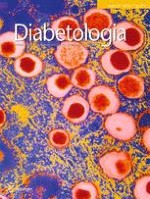Published in:

01-07-2012 | Article
Early seroconversion and rapidly increasing autoantibody concentrations predict prepubertal manifestation of type 1 diabetes in children at genetic risk
Authors:
V. Parikka, K. Näntö-Salonen, M. Saarinen, T. Simell, J. Ilonen, H. Hyöty, R. Veijola, M. Knip, O. Simell
Published in:
Diabetologia
|
Issue 7/2012
Login to get access
Abstract
Aims/hypothesis
The aim of the study was to investigate the timing of the appearance of autoantibodies associated with type 1 diabetes between birth and puberty, the natural fate of these autoantibodies and the predictive power of autoantibody concentrations for early progression to clinical diabetes.
Methods
Children were recruited to the Type 1 Diabetes Prediction and Prevention Project, an ongoing study based on HLA-conferred genetic risk. Autoantibodies against islet cells, insulin, GAD65 and islet antigen 2 were analysed at 3–12 month intervals, starting from birth.
Results
During the follow-up, 1,320 children (18.4% of the cohort of 7,165 children) were autoantibody positive in at least one sample. Altogether, 184 autoantibody-positive children progressed to type 1 diabetes. Seroconversion occurred at an early age in the progressors (median 1.5 years), among whom 118 (64%) and 150 (82%) seroconverted to autoantibody positivity before the age of 2 and 3 years, respectively. The incidence of seroconversion peaked at 1 year of age. Compared with other autoantibody-positive children, the median autoantibody levels were already markedly higher 3 to 6 months after the seroconversion in children who later progressed to diabetes.
Conclusions/interpretation
Early initiation of autoimmunity and rapid increases in autoantibody titres strongly predict progression to overt diabetes before puberty, emphasising the importance of early life events in the development of type 1 diabetes.